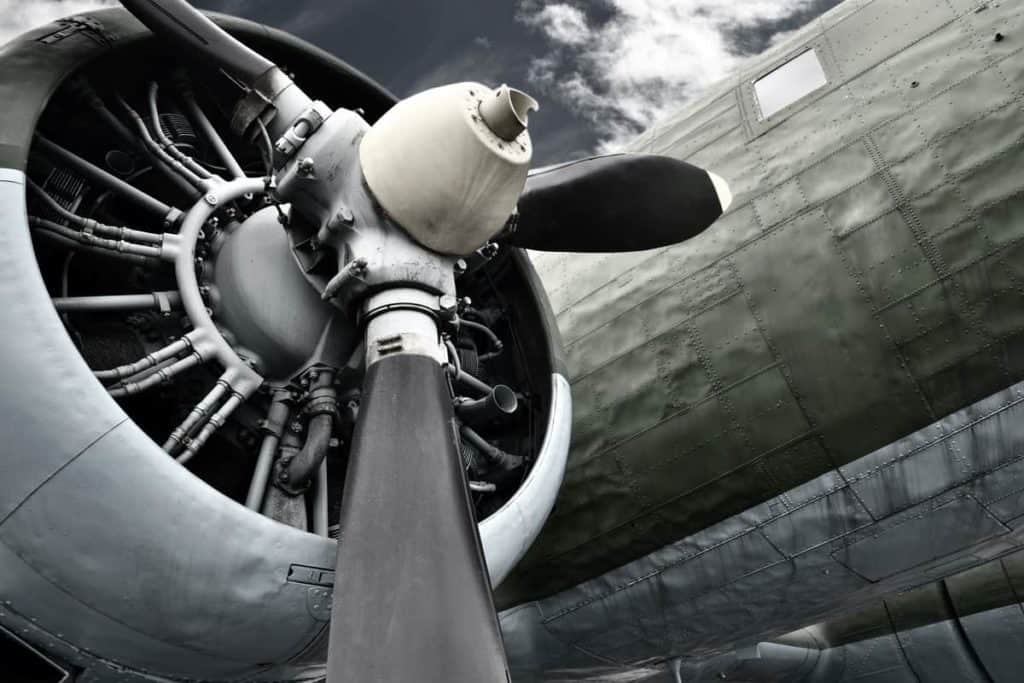NDT for Aircraft Propeller Inspection and Maintenance

Aircraft propellers are designed to work in some of the most pressure-filled environments. The engineering required to ensure safe travel at necessary heights and speeds is often unimaginable. Naturally, it is these speeds and environments that make aircraft propellers particularly susceptible to damage and fatigue.
Propeller inspection and maintenance is a constant job, as minor damage or wear and tear can come into play nearly every flight. There are routine inspections that can be done visually, but propellers also need more in-depth inspection in order to ensure safety. That’s where nondestructive testing comes in. NDT techniques can be leveraged to quickly, effectively, and cost-efficiently display minute flaws in aircraft propellers.
This is true for large commercial airlines and also for smaller passenger planes, cargo lines, and other turboprop aircraft. Given budgetary considerations, and the need to stay in the air in order to maximize tight profit margins, finding the right aircraft propeller inspection and maintenance solution is crucial.
Non-destructive testing inspection in the aerospace industry has become standard, but there are different NDT methods for different jobs. Making sure you have the right equipment for aircraft propeller inspection and maintenance is how companies can maintain safe operations within aircraft of all sizes.
Visible and “Invisible” Propeller Damage
There are two types of inspection routines: visual and visual with the aid of equipment. The visual checks are performed very frequently, as dictated by the standards of the manufacturer. These can be done as much as every 25 hours of flight time (in addition to any and all pre-flight inspections) and includes the inspection of blades, spinners, hubs, domes, and more. The trained inspector should be able to quickly spot issues like excessive grease, failure at weld points, and nicks, scratches, and flaws. Often a magnifying glass is brought to bear.
These are very effective at capturing immediate flaws, and often a lot more than the layperson could ever hope to spot. But of course, there are things that even the most skilled inspector won’t be able to pick up just by eyeballing.
That’s where nondestructive testing comes in. NDT can pick up more subtle elements. These can include:
- Hub surface corrosion
- Polished blade surface corrosion
- Pitting
- Delamination detection (for composites)
- Thickness
- Crack detection (subsurface)
- Volumetric assessment of stress and damage conditions
NDT inspections are sometimes performed every 100 hours of flight time, in addition to the visual overview. These can be performed often, which means it is crucial to have reliable and accurate equipment that’s also cost-effective.
Finding the Right NDT Equipment for AIrcraft Propeller Inspection and Maintenance
The most important thing that nondestructive testing can do is improve aerospace flaw detection. Improving this saves money, time, and can save lives. The ability to understand minute subsurface flaws lets inspectors create a preventative maintenance plan that gets ahead of issues before they turn into major problems.
| Watch our webinar on how advanced technologies can improve flaw detection in the aerospace industry. |
So what are technicians looking for when it comes to the right equipment for aircraft propeller inspection and maintenance?
- Ease of use. Doing multiple inspections on a variety of surfaces requires unique set-ups and calibrations. Instruments and tools should be easy to use in order to maximize efficiency.
- Ease of transportation. Technicians have to do a lot of inspections, on many different propellers. A good NDT system, consisting of instrumentation, software, scanners, and probes should be easy to use and easy to get around a site. Many of these are portable, though they don’t strictly have to be portable in order to be easy to use.
- Adaptability and Versatility. There are going to be many different kinds of geometries, from hubs to hinges to flat blades. Instruments should be able to measure different materials (such as metal and composite) as well as different angles.
- Durability. NDT equipment will be used in a lot of different conditions. You want a system that is more rugged than the propellers themselves.
- Cost-Effectiveness. At some point, someone has to sign off on the cost. While propeller inspections are invaluable, they also need to fit the budget.
- Accuracy. This is of course the most important one: none of the above considerations are worth much if the system doesn’t accurately and quickly show surface and subsurface flaws and issues.
Now, to be clear, there is no one set of instruments that does everything. For example, both eddy current testing and phased-array ultrasound testing can detect corrosion, but eddy current isn’t as useful when dealing with composites. It is, however, excellent with metal propellers. There are the right tools for different kinds of aircraft.
Finding the right one is vital for smaller aircraft, which have less room for error when it comes to maintenance schedules and likely have more trouble handling extended downtime. That’s why airlines of all sizes look for a partner who can help them get the best NDT equipment for their specific needs.
Accurate inspection means improved maintenance, continued operations, and likely a lower cost of business (due to the ability to detect flaws earlier rather than later). Finding the right NDT equipment for aircraft propeller inspection and maintenance is the best way to keep your aircraft propelling.
Zetec is a major provider of nondestructive testing for the aerospace industry. Contact us today to get the best equipment and the top solutions to keep your pipes powered up.

Zetec’s designers are industry-leading experts in ultrasonic and eddy current technologies, and we can help you navigate any of our NDT testing solutions or devices.
